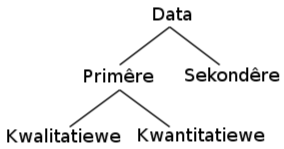| << Chapter < Page | Chapter >> Page > |
In die wêreld rondom ons word inligting dikwels in die vorm van syfers, grafieke en tabelle gegee. Ons sien dit op die televisie, op die radio en in die koerante. Ons word blootgestel aan misdaadsyfers, sportuitslae, reënval, die uitgawes van die regering, die tempo van HIV/VIGS infeksie, bevolkingsgroei en ekonomiese groei.
Hierdie hoofstuk demonstreer hoe Wiskunde gebruik kan word om data te manipuleer, om data en tendense voor te stel of wan voor te stel en om oplossings te bied wat direk betrekking het op die wêreld rondom ons.
Vaardighede wat in vorige grade verwerf is en verband hou met die versameling, organisering, uitbeelding, analise en interpretasie van inligting, word hier verder ontwikkel.
Dataversameling is in vorige grade bekendgestel as 'n manier om antwoorde te kry vir vrae wat te make het met die wêreld rondom ons.
Data verwys na inligting wat waargeneem of opgeneem is as deel van 'n eksperiment of 'n meningspeiling. Daar is twee tipes data: primêre en sekondêre data. Die woord "data" is die meervoud van die woord "datum".
Data kan geklassifiseer word as primêr of sekondêr , en primêre en sekondêre data kan verder geklassifiseer word as kwalitatief of kwantitatief . [link] som die klassifikasie van data op.

Die proses om primêre data om te skakel na sekondêre data deur analise, groepering of organisering is die proses waardeur informasie geskep word.
Data word versamel om antwoorde te kry wat help om 'n sekere situasie beter te verstaan. Hier is 'n paar voorbeelde van dataversameling uit die regte wêreld wat kwalitatiewe en kwantitatiewe data illustreer.

Notification Switch
Would you like to follow the 'Siyavula textbooks: wiskunde (graad 10) [caps]' conversation and receive update notifications?